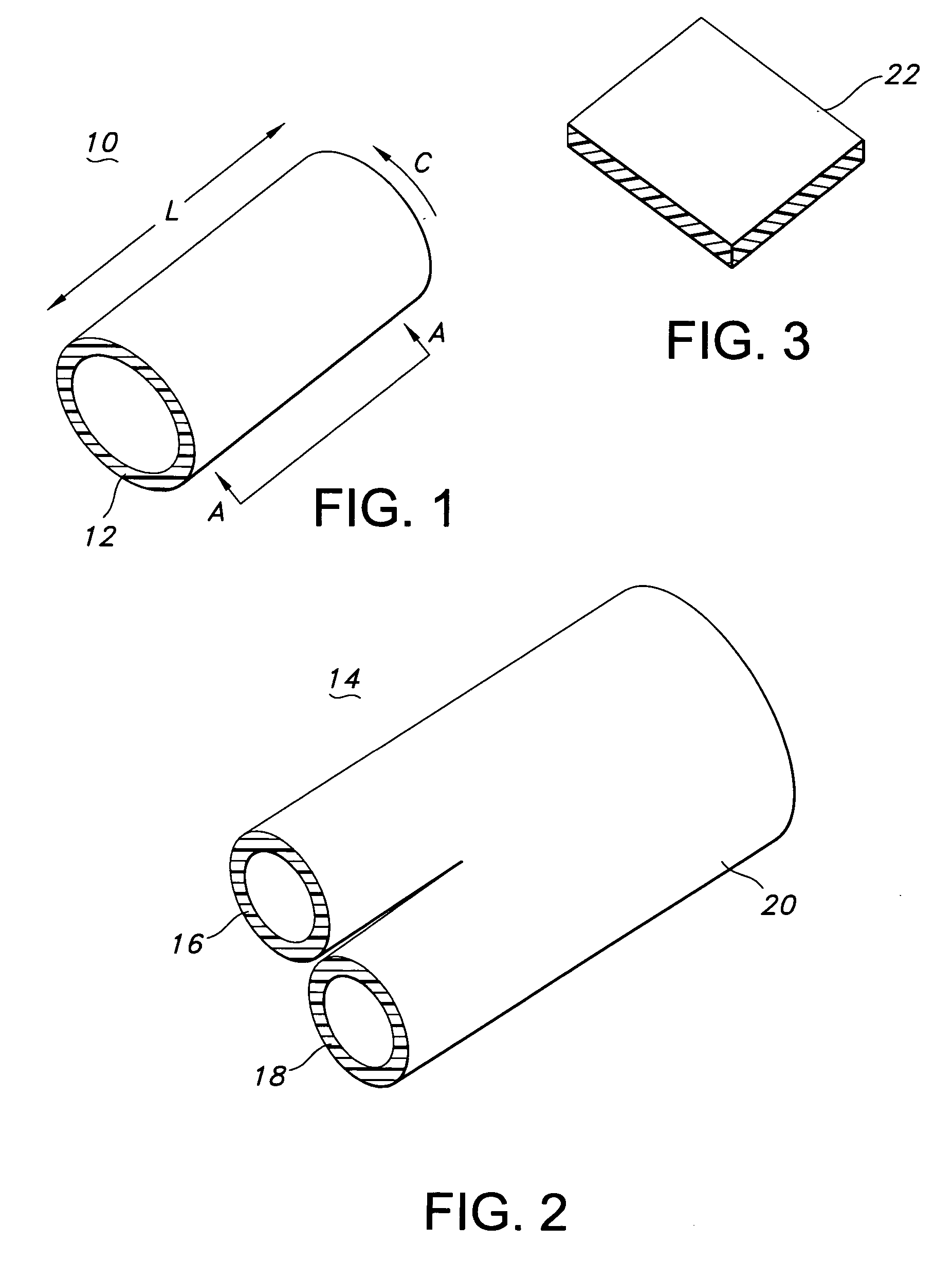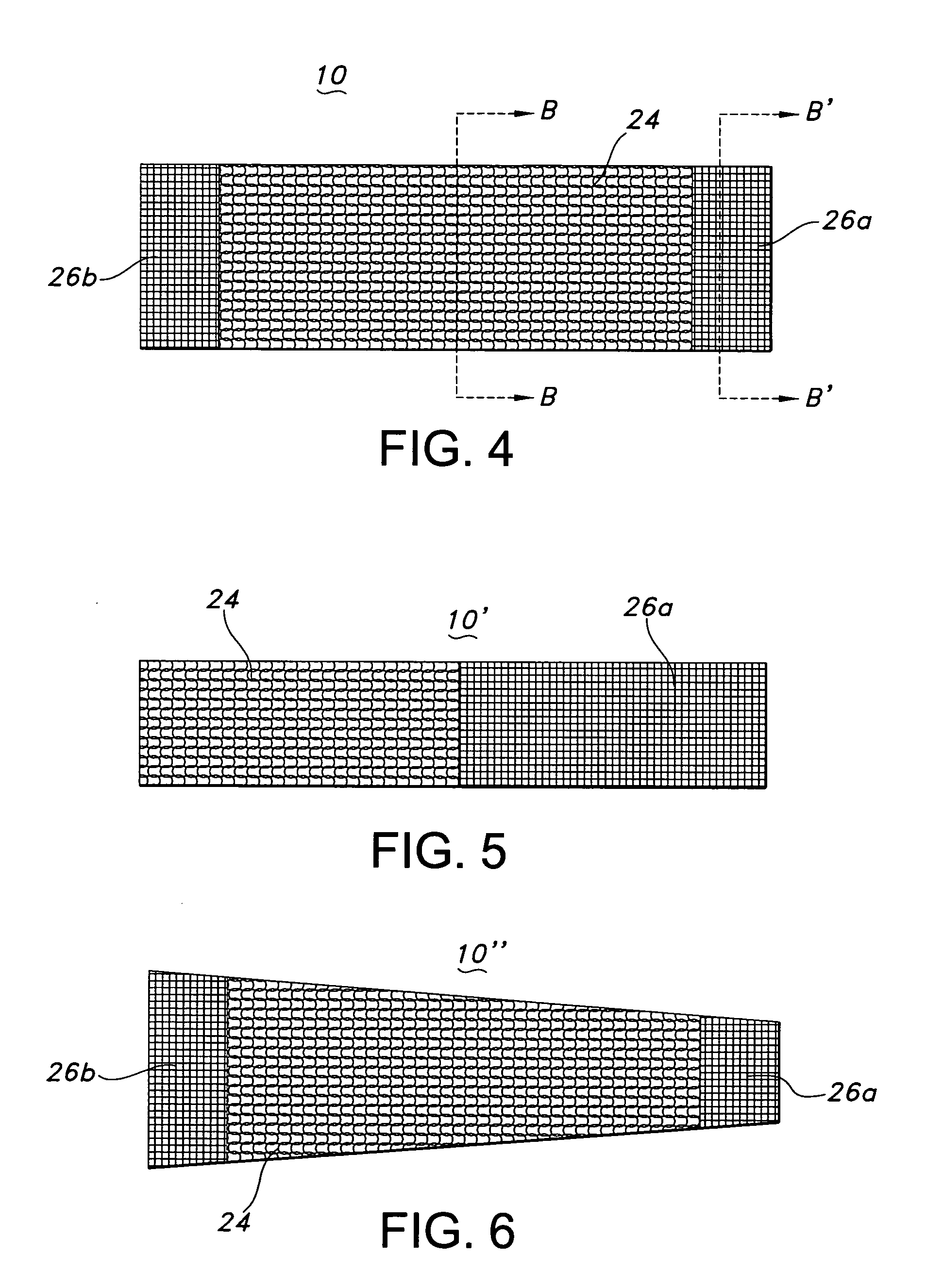Composite medical textile material and implantable devices made therefrom
a technology of textiles and medical materials, applied in the field of composite textile medical materials, can solve the problems of radial expansion and possibly longitudinal foreshortening, undesirable stresses of graft flexibility, and achieve the effect of improving compliance and improving resistance to dilation
- Summary
- Abstract
- Description
- Claims
- Application Information
AI Technical Summary
Benefits of technology
Problems solved by technology
Method used
Image
Examples
Embodiment Construction
:
[0067] The present invention is an implantable medical device having a composite textile construction defined by at least two textile portions with substantially different textile porosity or permeability. The permeability variation is achieved by the use of different textile patterns; such as woven or knitted patterns; different yarn types, and different post textile processing, such as compaction.
[0068] The composite textile medical device of the present invention may be a hollow tubular prosthesis 10, as illustrated in FIG. 1. The prosthesis 10 is a single lumen device defined by a cylindrical wall 12. The cylindrical wall 12 of prosthesis 10 includes the composite textile construction of the present invention and may further include a polymeric tube or film-like tube associated with it to provide a composite textile / polymeric prosthesis. Further, the composite textile prosthesis and the composite textile / polymeric prosthesis may have a stent associated with it to provide a ste...
PUM
 Login to View More
Login to View More Abstract
Description
Claims
Application Information
 Login to View More
Login to View More - R&D
- Intellectual Property
- Life Sciences
- Materials
- Tech Scout
- Unparalleled Data Quality
- Higher Quality Content
- 60% Fewer Hallucinations
Browse by: Latest US Patents, China's latest patents, Technical Efficacy Thesaurus, Application Domain, Technology Topic, Popular Technical Reports.
© 2025 PatSnap. All rights reserved.Legal|Privacy policy|Modern Slavery Act Transparency Statement|Sitemap|About US| Contact US: help@patsnap.com



